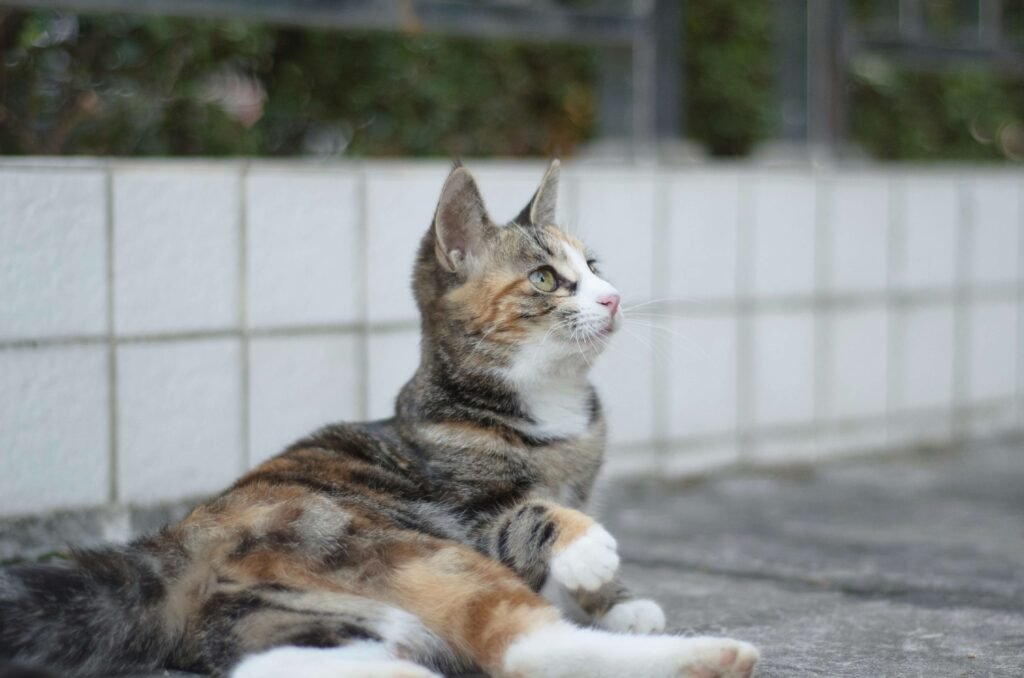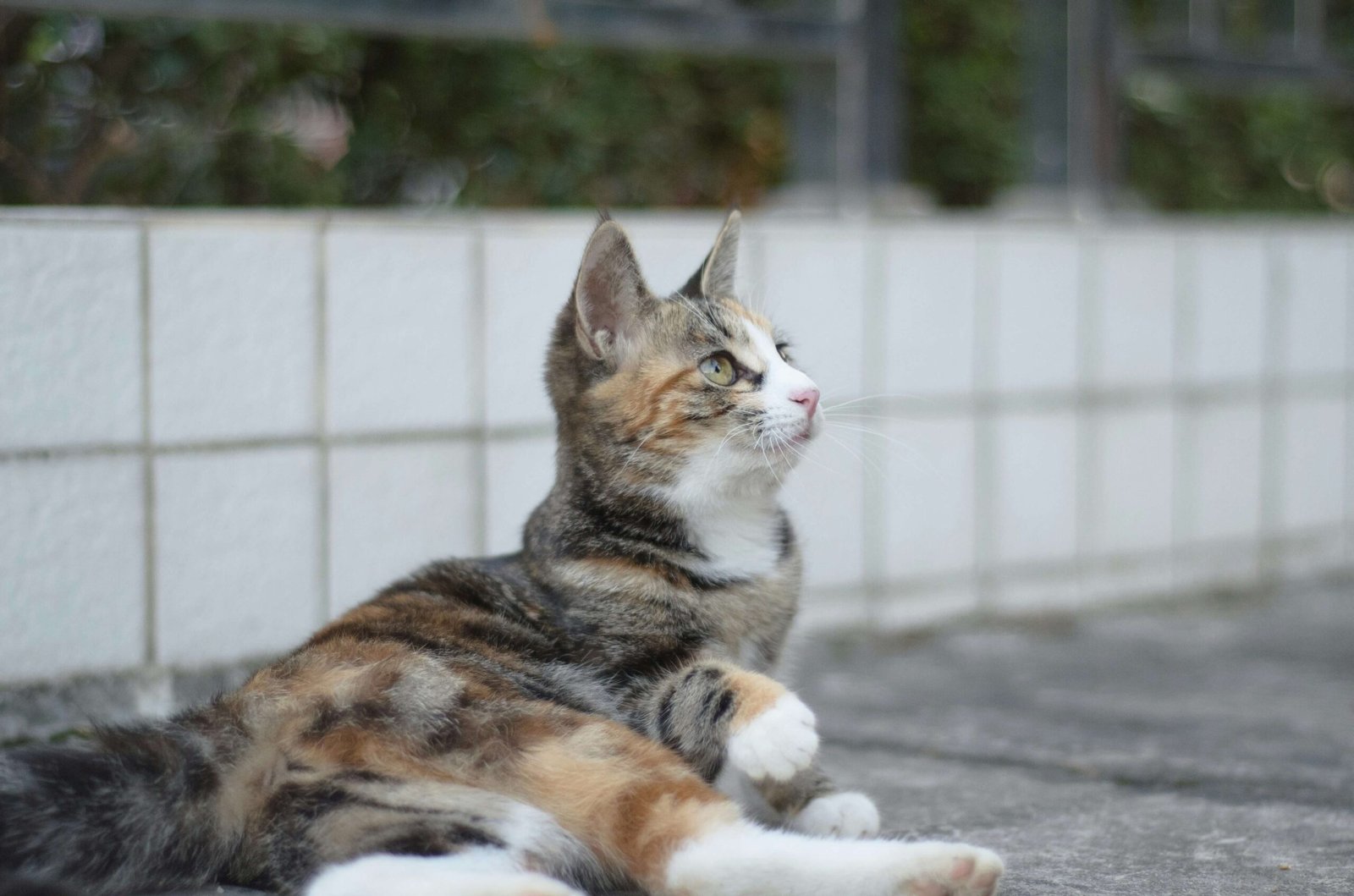Understanding Unwell Cat Sleeping Positions: What Your Feline’s Posture Can Tell You
Cats are masters of disguise when it comes to illness. Their natural instincts drive them to hide signs of weakness, making it challenging for pet owners to recognize when something is wrong. However, one subtle yet telling sign of a sick cat lies in their sleeping positions. While cats are known for their quirky and adorable sleeping habits, certain postures can indicate discomfort, pain, or underlying health issues. In this blog post, we’ll explore the most common unwell cat sleeping positions, what they mean, and how you can provide support for your furry companion during times of illness.
Common Sleeping Positions of an Unwell Cat
When your cat isn’t feeling well, their sleeping position can change significantly. These changes often reflect their level of comfort, pain, or attempts to alleviate discomfort. Here are some common sleeping positions that may signal your cat is unwell:
Curled into a Tight Ball
This position helps cats conserve body heat and protect their vital organs. If your cat frequently sleeps like this and seems lethargic, it could be a sign of discomfort or illness.Stretching Out Unusually Flat
While stretching is normal, lying flat on their belly with limbs extended might indicate difficulty breathing or abdominal pain. Monitor if this posture is accompanied by labored breathing.Hiding Their Face
Cats who tuck their face under their body or paws while sleeping may be trying to block out stimuli or cope with stress caused by illness.Splayed Legs
If your cat sprawls their legs out more than usual, it could suggest they’re too weak to maintain a typical sleeping position. This might also indicate overheating or dehydration.Unusual Restlessness
Frequent shifting, inability to settle, or waking up abruptly during sleep can point to discomfort or pain.
If you notice any of these positions consistently, it’s important to observe other symptoms and consult your veterinarian for a thorough check-up.
How to Interpret Your Cat’s Sleeping Behavior
Understanding why your cat adopts certain sleeping positions requires paying close attention to context and accompanying behaviors. Below are key factors to consider when interpreting your cat’s sleeping habits:
Duration of Sleep
An increase in sleep duration can sometimes indicate fatigue or lethargy associated with sickness. However, excessive sleep alone doesn’t always mean illness—it could simply reflect age or breed tendencies.Location Preferences
A sudden preference for secluded or unusual sleeping spots might signal a desire to hide due to feeling vulnerable or unwell.Body Tension
Notice whether your cat’s muscles appear tense or relaxed in their sleeping posture. Tension can suggest pain or discomfort.Facial Expressions
Even in sleep, a cat’s facial expressions can reveal distress. Squinted eyes, twitching whiskers, or a furrowed brow may indicate unease.Interaction Levels
If your cat avoids interaction before or after sleep despite being affectionate otherwise, it could be a red flag for illness.
By combining observations of sleeping positions with these additional cues, you’ll gain a clearer picture of your cat’s overall health and emotional state.
Check this guide 👉Why Does My Cat Sleep on My Pillow? Best 7 Behavior Tips!
Check this guide 👉Decoding the Secrets of Cat Sleeping Positions: Best 7 Tips!
Check this guide 👉Why Does My Cat Sleep on Me? Best 7 Behavior Tips!

Sleeping Position | Possible Meaning |
|---|---|
Curled into a tight ball | Attempting to conserve heat or protect vital organs |
Lying flat on their belly | Potential difficulty breathing or abdominal discomfort |
Hiding their face | Coping with stress or sensory overload |
Splayed legs | Weakness, overheating, or dehydration |
Restless shifting during sleep | Discomfort, pain, or anxiety |
Other Signs to Watch For Alongside Sleeping Positions
While sleeping positions are valuable indicators, they should never be evaluated in isolation. Look for these additional signs that often accompany illness in cats:
Changes in Appetite
Refusal to eat or overeating can both indicate underlying health problems. Keep track of your cat’s eating patterns closely.Altered Grooming Habits
Excessive grooming or neglecting grooming altogether can signal stress, pain, or skin irritation.Vocalization Changes
Increased meowing, purring, or silence when usually vocal might reflect discomfort or distress.Lethargy or Hyperactivity
Extreme tiredness or sudden bursts of energy can both be warning signs of illness.Physical Symptoms
Look for visible issues such as vomiting, diarrhea, coughing, sneezing, or discharge from eyes/nose.
Combining these observations with changes in sleeping behavior will help paint a comprehensive picture of your cat’s condition.
Tips for Supporting a Sick Cat
If you suspect your cat isn’t feeling well based on their sleeping positions and other signs, there are steps you can take to support them until professional veterinary care is available:
Provide a Comfortable Space
Create a quiet, cozy area where your cat feels safe and secure. Soft bedding and familiar scents can make a big difference.Monitor Hydration
Ensure fresh water is always accessible. Dehydration worsens many health conditions, so encourage drinking if possible.Offer Gentle Interaction
Engage with your cat gently without forcing activity. Speak softly and offer reassurance through touch if they seem receptive.Maintain Routine
Stick to regular feeding and play schedules to minimize stress and provide stability.Avoid Self-Diagnosis
While home care is helpful, avoid diagnosing or treating your cat yourself. Always seek advice from a qualified vet.
Your attentiveness and care can go a long way in helping your cat feel better while awaiting professional guidance.
Additional Comfort Measures for Your Unwell Cat
When your cat is feeling under the weather, providing extra comfort can make a significant difference in their recovery process. Here are some practical steps to ensure your feline feels safe and supported:
Adjust the Environment
Dim the lights and reduce noise levels to create a calming atmosphere. Cats are sensitive to their surroundings, and a peaceful environment can help them rest better.Use Familiar Items
Place their favorite blanket, toy, or cushion nearby. Familiar scents provide reassurance and help reduce anxiety during times of illness.Maintain Warmth
Ensure the room temperature is comfortable. You can also use a heated pet pad (set on low) to keep your cat warm without overheating.
By taking these small yet impactful measures, you can create a nurturing space that promotes healing and relaxation for your unwell cat.
Foods to Offer When Your Cat is Sick
Nutrition plays a vital role in supporting your cat’s recovery, but it can be challenging to encourage them to eat when they’re not feeling well. Here are some options to consider:
High-Moisture Foods
Wet food or broth-based meals can help keep your cat hydrated while providing essential nutrients. Look for options with high-quality protein.Strong-Smelling Options
Cats rely heavily on their sense of smell when eating. Strong-smelling foods like tuna or chicken-flavored treats may entice them to eat.Small, Frequent Meals
Instead of large portions, offer smaller meals throughout the day to avoid overwhelming your cat’s appetite.Homemade Blends (with Vet Approval)
Simple homemade recipes like boiled chicken and rice can be appealing, but always consult your vet before making dietary changes.Hydration Boosters
Add a little water or unsalted chicken broth to their food to increase fluid intake, especially if they’re reluctant to drink water.
Providing nutrient-rich, appetizing meals can help your cat regain strength and energy, even when they’re feeling unwell.
When to Seek Immediate Veterinary Care
While some changes in behavior or sleeping positions may not be urgent, others require immediate attention. Knowing when to act quickly can save your cat’s life. Consider these red flags:
Labored Breathing
If your cat is panting, wheezing, or struggling to breathe, this could indicate a serious respiratory issue that needs immediate care.Prolonged Lethargy
A cat that remains unresponsive or excessively sleepy for more than 24 hours should be evaluated by a vet as soon as possible.Vomiting or Diarrhea
Persistent vomiting, diarrhea, or blood in stool/urine requires urgent veterinary intervention to prevent dehydration or further complications.Sudden Collapse
If your cat collapses or shows signs of extreme weakness, seek emergency care immediately, as this could indicate a critical condition.Seizures or Tremors
Any unusual neurological symptoms, such as seizures, tremors, or disorientation, demand immediate professional attention.
Recognizing these warning signs early can make all the difference in ensuring your cat receives timely and effective treatment.
Frequently Asked Questions About Unwell Cat Sleeping Positions
Why does my cat suddenly sleep in strange positions?
Sudden changes in sleeping positions can indicate discomfort, pain, or illness. Cats adjust their posture to cope with physical or emotional challenges.
Is it normal for cats to sleep a lot when they’re sick?
Yes, increased sleep is common when cats are unwell as their bodies focus on healing. However, prolonged lethargy should not be ignored.
Should I wake my cat if they’re sleeping unusually?
Avoid disturbing your cat unnecessarily, but monitor their behavior closely. Persistent unusual sleeping patterns warrant veterinary attention.
Can stress cause changes in my cat’s sleeping habits?
Absolutely. Stress can lead to altered sleeping positions and durations. Identifying and addressing stressors is crucial for your cat’s well-being.
When should I contact a vet about my cat’s sleeping behavior?
Contact a vet if the unusual sleeping behavior persists, is accompanied by other symptoms, or if you notice significant changes in appetite, energy levels, or behavior.
Final Thoughts: Decoding Your Cat’s Sleeping Language
Cats communicate volumes through their body language, and their sleeping positions are no exception. By learning to interpret these subtle cues, you can better understand your feline friend’s needs and intervene promptly when necessary. Remember, early detection of illness is key to ensuring your cat receives timely care and treatment. Stay vigilant, trust your instincts, and prioritize professional veterinary advice whenever doubts arise. After all, your bond with your cat is built on love, trust, and mutual understanding—a foundation that grows stronger when you listen to what their sleeping habits are trying to tell you.
Canned Pumpkin for Cat Diarrhea: Best 7 Expert Tips! Natural remedy to firm stools, soothe upset bellies, and support gut health safely.
Can a Cat Give You Scabies? Best 7 Expert Tips! Discover the truth about feline mites, human skin risks, and how to protect yourself—without panic.
Cat Flea vs Human Flea: Best 7 Expert Tips! Discover the truth about bites, species, and how to eliminate infestations for good.
Weird Cat Behaviors: Best 7 Expert Tips! Discover why cats do strange things—and how to understand, not punish, their instincts for a happier home.





